Data From Destruction
4:03 minutes
 This segment is part of The State of Science, a series featuring science stories from public radio stations across the United States. This story, by Eli Chen, originally appeared on St. Louis Public Radio.
This segment is part of The State of Science, a series featuring science stories from public radio stations across the United States. This story, by Eli Chen, originally appeared on St. Louis Public Radio.
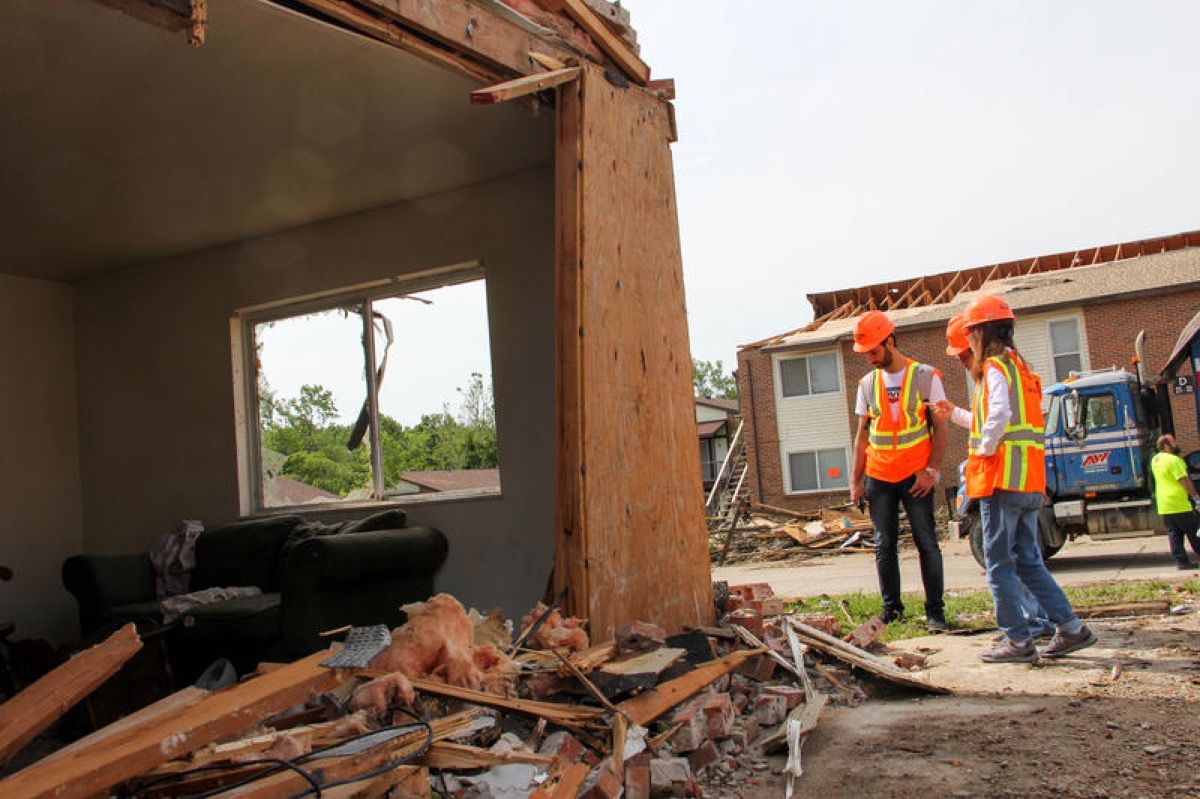
Among the volunteers and workers moving furniture, broken lumber and fallen trees at Hawthorne Park apartments in Jefferson City last weekend, three engineers with a large remote control watched a drone fly over a building that was missing a chunk of its roof.
A team of engineering professors and students from the Missouri University of Science and Technology began inspecting damages after a violent tornado struck parts of the state capital last Wednesday. For several years, some have been studying ways to design houses in Tornado Alley states like Missouri to withstand extreme weather events.
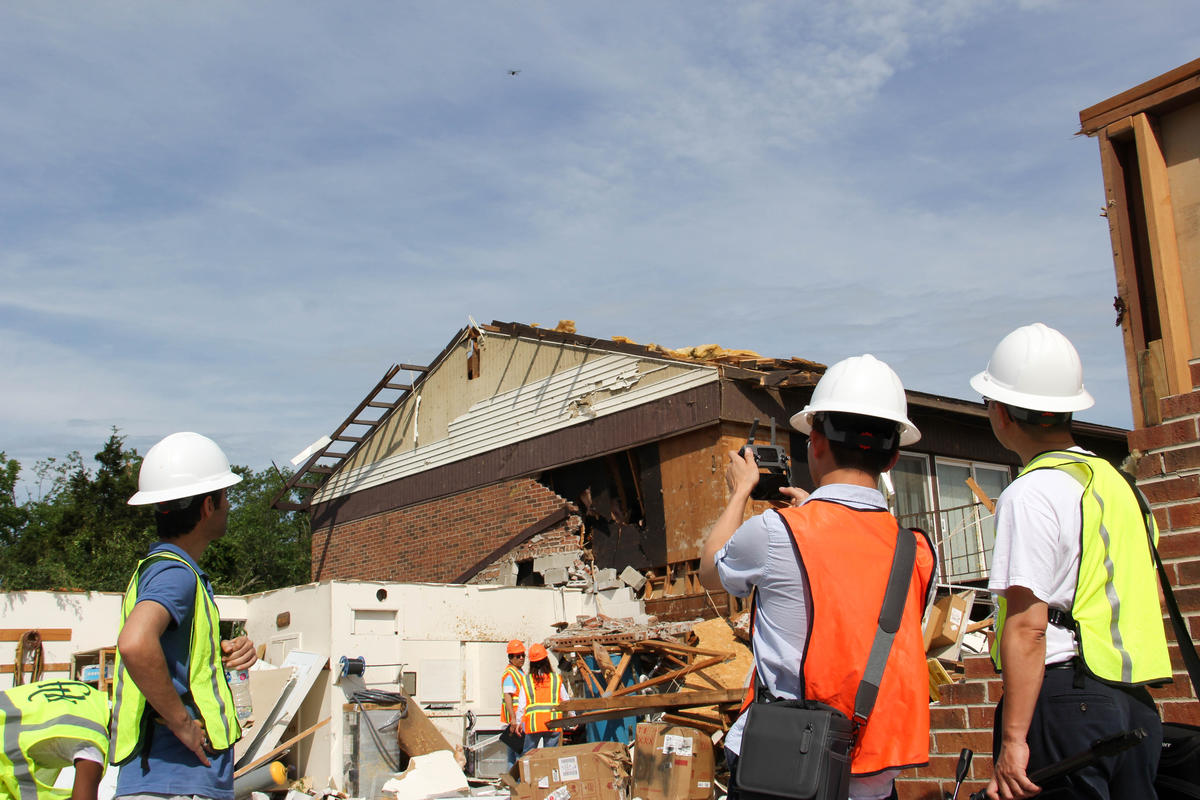
The tornado that hit Jefferson City last week brought 160 mile-per-hour winds, making it an EF-3 tornado. It would be too expensive to build homes that would protect homes against more intense tornadoes, but a lot of costs could be saved from building homes to withstand lower-level tornadoes, Yan said.
Many residential buildings across the country are built according to the International Residential Code and standards set by the American Society of Civil Engineers. The code, for example, requires corrosion-resistant clamps or nails to hold down roofs, which can protect buildings against straight-line winds, or winds caused by thunderstorms.
But the standards don’t consider the how stronger, rotating winds from tornadoes damage buildings. By documenting the destruction in Jefferson City, Yan wants recommend improvements to the American Society of Civil Engineers’ criteria.
“[In civil engineering] everything’s about advancing the material, advance the construction approach,” Yan said. “But in front of a tornado, everything is fragile. As a civil engineer, I think we need to do something about this.”
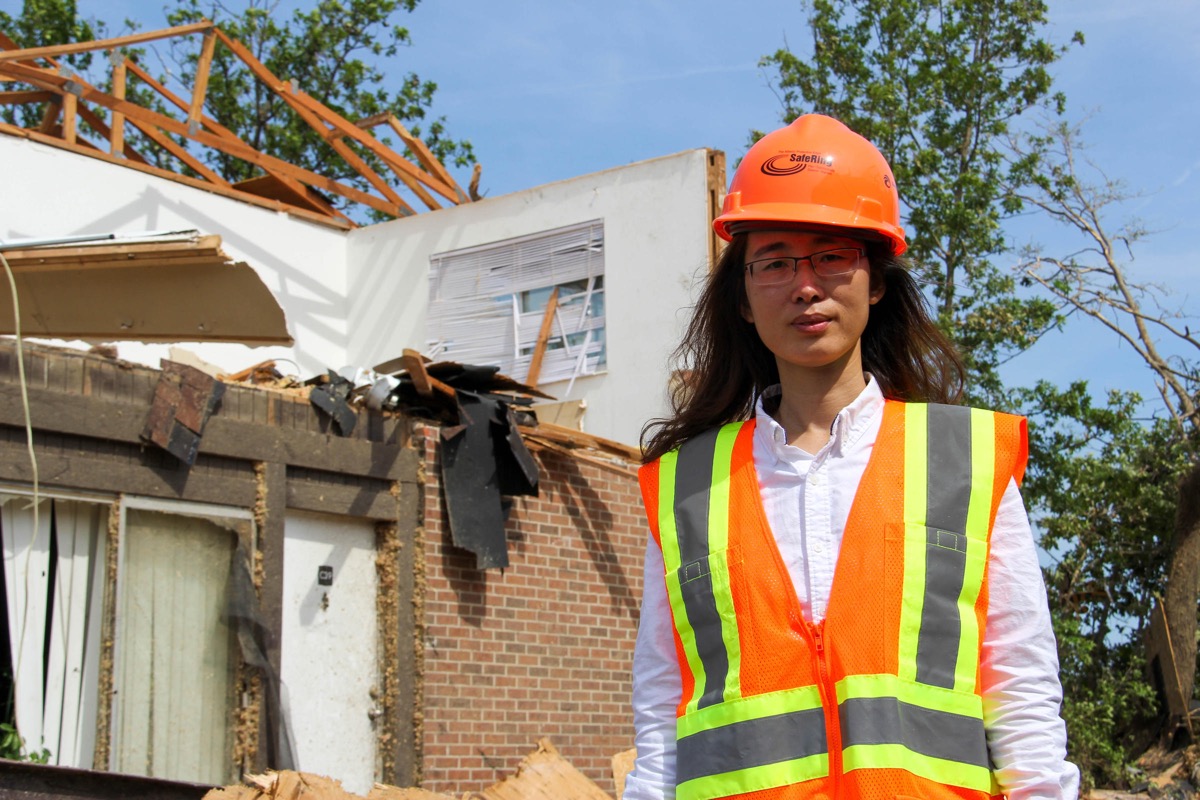
The spinning air column causes air to flow out, creating low pressure inside the tornado. When it comes in contact with a house, which has higher air pressure, the tornado acts like a suction, tearing off roofs and other objects along its path.
“You’ll see that the roofs have been lifted off; some of the walls have come down. That’s the most common things we’ve seen,” said Troy Arnold, a vice president of Haley Residential, an Omaha, Nebraska-based property-management company.
Haley Residential owns the 240 units at Hawthorn Park, built in the 1960s and 1970s. The company likely will rebuild the apartments according to Jefferson City’s current building code, Arnold said. The city uses the 2015 International Residential Code, which has some provisions that require wind-resistant design. That includes installing metal ties, or hurricane clips, to connect the roof with the rest of the building.
But the 2015 version of the code doesn’t necessarily protect homes against tornadoes, said Dan Vandevoorde, plans examiner for Jefferson City.
“When we had a Category 3 [tornado] with 160 mph winds, there isn’t a whole lot that could withstand that unless you went way above,” Vandevoorde said. “Everyone has to keep in mind, the building code is the minimum standard. So even at the minimum standard, it does offer protection, but it doesn’t take into account for, you know, tornadoes.”
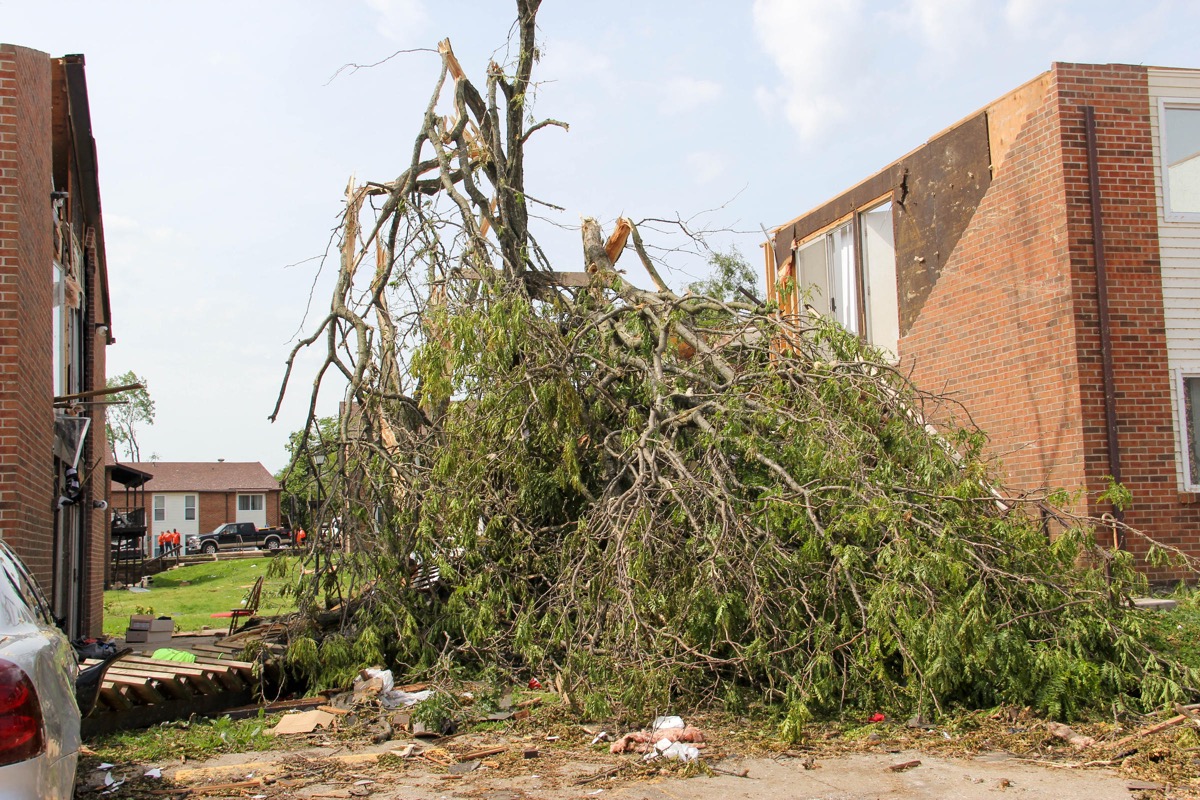
Builders often want requirements to be minimal in order to keep costs low. That, along with the unpredictable nature of tornadoes, make it difficult to change building codes to better protect communities against tornadoes, said Kishor Mehta, a civil engineering professor at Texas Tech University.
“Even though the [additional] cost is not high, builders prevail in local communities to keep the costs down as much as possible,” Mehta said.
Installing metal ties to make a house tornado-resistant would increase construction costs for new buildings by no more than 1% and for existing buildings, no more than 2%, Yan said. The American Society of Civil Engineers is developing new standards to be established in 2022, which will likely account for wind speeds and pressure that come from tornadoes.
Throughout the inspection at Hawthorne Park, Yan and a structural engineering professor, Mohamed ElGawady, discussed the materials at destroyed buildings. ElGawady often pointed out the condition of the brick veneer that covered most of the buildings, noting that it needs to be reinforced and more connected to the frame of the structure.
“Do you think instead of brick, we could use something different here, like siding?” Yan said.
“Well, the veneer is very beautiful. It’s very nice,” ElGawady said. “I think it’s better to think about how to make it perform better, have better connections.”
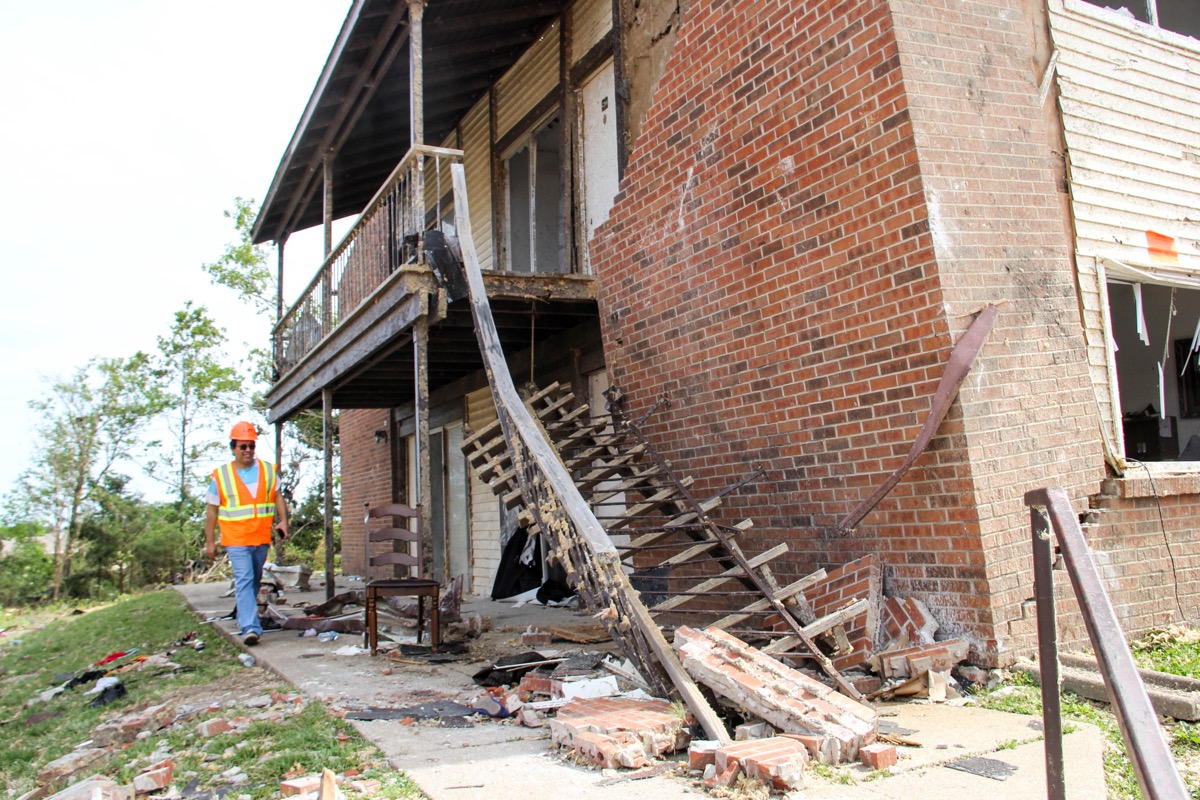
He then pointed at another building, where the veneer had collapsed in one large piece. Next to it was a staircase that had twisted off of the building.
“Imagine if someone tried to run away — that’s scary, right?” Elgawady said, then looked back at the collapsed veneer. “I’d never seen something like that, that came out a single piece.”
It wasn’t Yan’s first time inspecting destruction from a tornado, but it’s tough to see the damages, she said.
“When I see this, I was very emotional; I even cried on the site,” Yan said. “I think as civil engineers, we did not do a good job.”
But she’s hopeful that building standards will improve. This summer, she and her colleagues expect to finish building a 21-foot tornado simulator chamber at Missouri S&T that will model how storms destroy houses. By doing that research, Yan is optimistic that her research will lead homebuilders to use materials and methods that make houses more resistant to extreme weather.
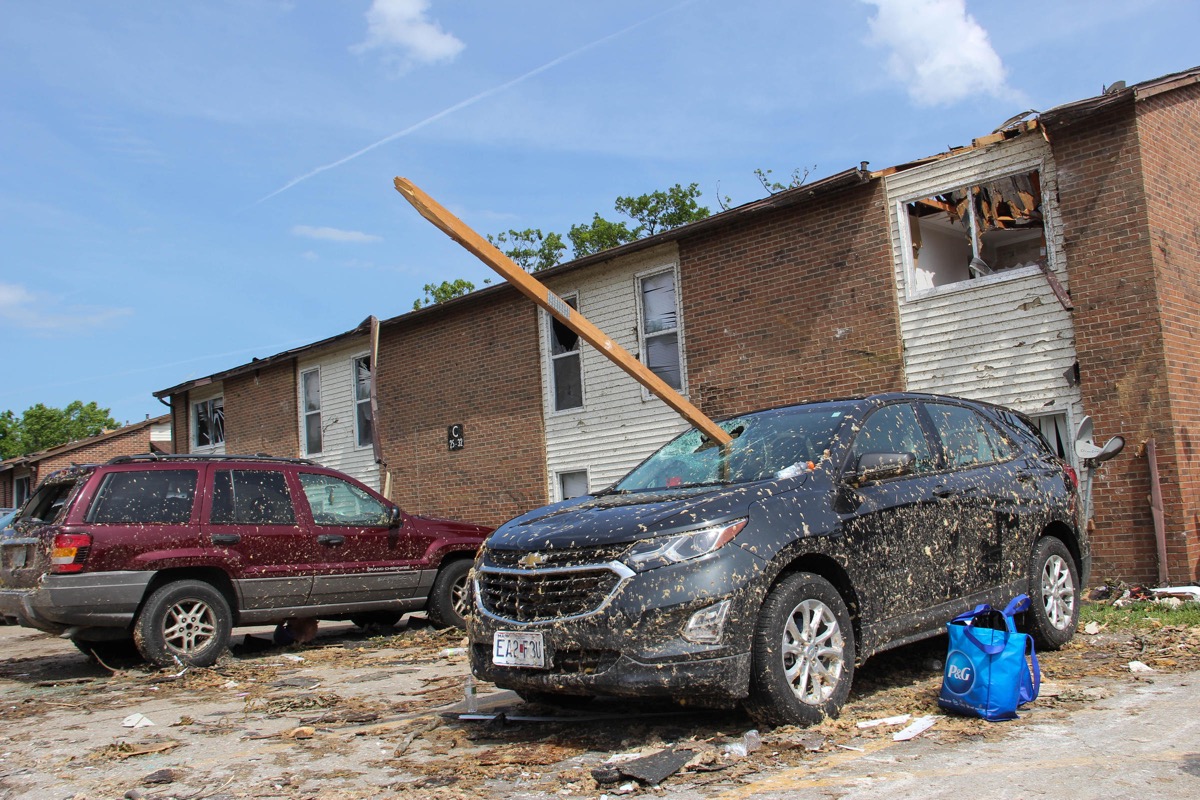
Eli Chen is a science and environment reporter for St. Louis Public Radio and a former contributing producer for Science Friday.
IRA FLATOW: And now it’s time to check in on the state of science.
SPEAKER 1: This is [INAUDIBLE]
SPEAKER 2: For WWNO–
SPEAKER 3: St. Louis Public Radio.
SPEAKER 4: [INAUDIBLE] News.
SPEAKER 5: Iowa Public Radio News.
IRA FLATOW: Local science stories of national significance. May was a busy month for tornadoes across the US, with over 370 confirmed tornadoes spotted. And one place that saw extensive tornado damage was Jefferson City, Missouri. And engineers are looking at the damage from those storms to try to design better structures.
Can you make a building that will better withstand the battering of a tornado? Joining me to talk about that is Eli Chen, science and environment reporter at St. Louis Public Radio. Welcome back, Eli.
ELI CHEN: Hey, Ira. How’s it going?
IRA FLATOW: Tell us about who’s doing this work. What kind of data are they looking for?
ELI CHEN: Yeah. So about two weeks ago, I followed a band of engineers from the Missouri University of Science and Technology who spent several days looking at damages from an EF tornado that came through Jefferson City. And for those who aren’t familiar with that scale, five would be the highest intensity on it. And some of the professors who were part of the group had already been doing some long-term research on tornadoes and how they damage houses.
And basically, I watched them walk around an area where apartments were pretty badly hit. You know, roofs were torn off and walls came down. And I listened to a couple of them have some pretty intricate conversations about how maybe the brick veneer could be better reinforced or how metal clips could be used to secure roofs. So they took a lot of photos and some drone footage, and they brought that back to their laboratory to build computer models.
IRA FLATOW: So they’re not looking to make a damage-proof building, but just a way you could limit some of the damage to the building.
ELI CHEN: Yeah. So the leader of this group was Grace Yan who directs the Wind Hazards Mitigation Laboratory at the University. And she just wants to update building standards so that houses are protected against lower-level tornadoes. She says it’s not cost effective to build for the worst case scenario, and I imagine not everyone wants to live in a steel bunker.
But Yan says it’s worth it to design homes that are a little stronger, especially in Tornado Alley states like Missouri and Kansas. You know, if your house ends up being in the way of a tornado, you’d rather lose just the shingles as opposed to your entire roof.
IRA FLATOW: Do the standards take into account everything a tornado can do?
ELI CHEN: Not exactly. So as I was told, the challenge in changing building standards, even in Tornado Alley states, is that tornadoes hit pretty infrequently and randomly. And even when I was in Jefferson City just outside those apartments, I saw some homes that were perfectly intact.
And so Grace Yan says that the American Society of Civil Engineers, they have these standards that builders need to follow, but they only consider straight-line winds or strong winds that come from a tornado. And I think we have a clip where she says that.
GRACE YAN: They only include how to calculate the wind pressure induced by straight-line winds, not by this type of extreme winds, not by tornado.
IRA FLATOW: That’s kind of not useful then for the tornado country.
ELI CHEN: No, it’s not. Yeah. Tornadoes cause rotating winds unlike the winds that come from thunderstorms, and that causes air to flow out, so that creates low pressure inside that spinning air column. And when that touches down onto like a higher pressure object like a house, then that tornado becomes like a suction. So that’s why you see roofs get pulled off and other objects in its path.
IRA FLATOW: So they’re looking to create standards that will, as you say, not prevent the tornado from ripping the whole house, but at least getting repairable stuff.
ELI CHEN: Yeah. So the engineers just want a better understanding of how tornadoes of different intensities damage buildings, and they really want to use that research to recommend that the American Society of Civil Engineers use calculations that consider tornadoes.
IRA FLATOW: All right, Eli. Thank you very much for that reporting.
ELI CHEN: Thank you.
IRA FLATOW: Eli Chen who is out there– science and environment reporter at St. Louis Public Radio.
Copyright © 2019 Science Friday Initiative. All rights reserved. Science Friday transcripts are produced on a tight deadline by 3Play Media. Fidelity to the original aired/published audio or video file might vary, and text might be updated or amended in the future. For the authoritative record of Science Friday’s programming, please visit the original aired/published recording. For terms of use and more information, visit our policies pages at http://www.sciencefriday.com/about/policies/
As Science Friday’s director and senior producer, Charles Bergquist channels the chaos of a live production studio into something sounding like a radio program. Favorite topics include planetary sciences, chemistry, materials, and shiny things with blinking lights.